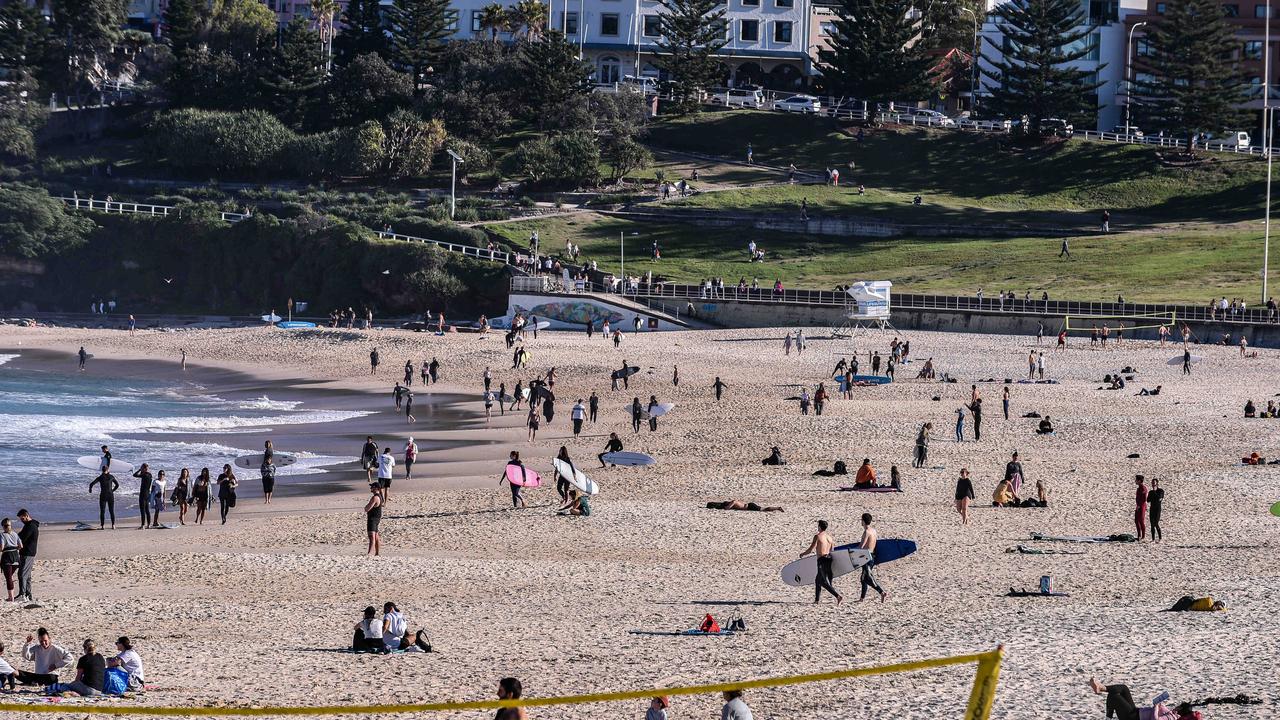Beachgoers on Australia’s east coast have been dodging various jellyfish species this summer amid a perfect storm of conditions for marine stingers.
It’s been a summer of stingers on beaches up and down Australia’s east coast as a notable surge in jellyfish numbers forces many swimmers to reconsider getting their toes wet.
An armada of jellyfish – including bluebottles, lion’s mane, and the notorious Irukandji – have turned a routine ocean swim into a painful obstacle course for holidaymakers across the country as a perfect storm of conditions combine for a painful summer.
The sight of bulbous blue mounds on the shore is usually warning enough, but surf lifesaving organisations along the NSW, Tasmanian, and Queensland coasts have been forced to put signs up to alert swimmer to the influx of bluebottles.
Social media awash with beachy holiday snaps but this year they are often accompanied by a warning.
“If you’re heading to the beach today, watch out for bluebottles. There were a bunch of them on my morning walk today!” posted NSW MP Jodie Harrison on Tuesday.
“I think we saved many people from stings this afternoon!” wrote Anna Yildrim on December 30, after making a pile of bluebottles on the beach.
“They just swam but would come up to the pile we made and comment on how many there were. I lost count after 50+ far out!”
Meanwhile, several North Queensland beaches were forced to close this month after a spate of marine stings from Irukandji, including two young boys who were hospitalised.
One boy was escorted to Cairns Hospital in a stable condition following a sting at Trinity Beach on January 17, while another boy required airlifting to Mackay Hospital stable after he was stung on Hamilton Island.
Experts are crediting the summer jellyfish surge to warm waters – which improves jellyfish breeding and growth rates – and strong north-easterly winds.
Tropical cyclones Seth and Tiffany may also have had a role in washing stingers towards shore.
Tasmanian-based biologist and jellyfish expert Dr Lisa-ann Gershwin said a spike in summer jellyfish numbers was not unprecedented, although she admitted it was still shocking when you witness it.
“It‘s the warmer months which is when they bloom or you know, they kind of multiply into super abundances, so that part’s fairly normal, seasonal,” Dr Gershwin told 3AW.
“But we’re also having an extremely warm spike kind of year. This tends to amp up their metabolism, they grow faster, they breed more, they live longer.
“And that’s what we’re seeing and not just this species, we’re seeing lots and lots of species of jellyfish right across the country that are just going absolutely bananas right now.”
Experts say the best treatment for bluebottle stings is to rinse well with sea water and then use hot water or ice for the pain.
If stung by an Irukandji, Queensland Ambulance says to avoid rubbing the sting area and immediately douse the sting area with vinegar for at least 30 seconds.
If vinegar is not available, carefully remove tentacles off skin and rinse well with seawater.
Call triple-0 for an ambulance immediately.
Originally published as Aussie beachgoers battling brutal stinger season as weather conditions see huge surge in jellyfish
For all the latest Technology News Click Here
For the latest news and updates, follow us on Google News.

